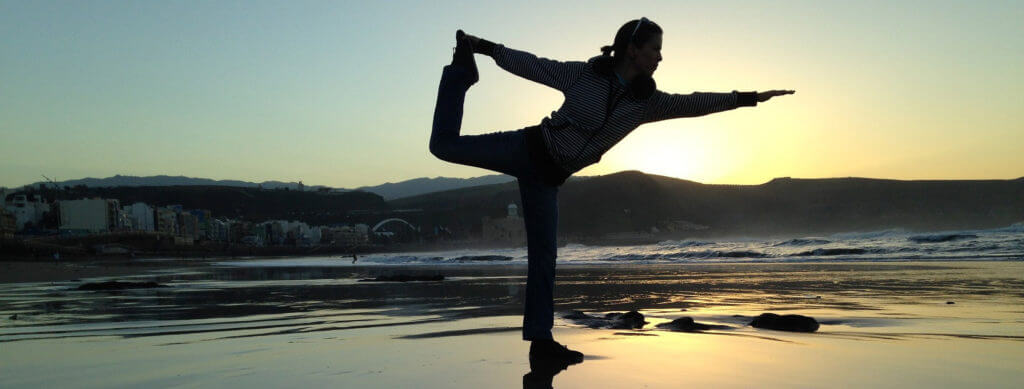Progressing to the single leg squat … and beyond

As humans we walk and run to get from A to B. We don’t jump like frogs or kangaroos.
If we were training and rehabbing frogs and kangaroos then double leg squats would probably be the exercise of choice.
However, we are bidpeds that walk and run. This involves a unilateral stance phase, where all load is taken through just one leg. When it comes to athletes, they almost always jump or change direction with the majority of their load on one leg. Think of a high jumper, a long jumper or a rugby player cutting back inside his opponent.
So what does this mean?
For truly functional strengthening we should try to get our clients and patients strengthening on one leg wherever possible. Double leg squats can be great for teaching basic squat technique and in power athletes using high external loads, it’s a way of building gross lower body strength. However, unlike double leg squats, single leg weight bearing and squatting exercises really challenge balance, proprioception and very importantly, the lateral hip musculature. McCurdy et al (2010) demonstrated that during double leg squats the quadriceps are more active than gluteus medius and hamstrings. For single leg squats, the reverse was true – gluteus medius and hamstrings were more active than the quadriceps.
For the vast number of patients that walk through our door, poor lateral hip strength and stability is a common finding, and particularly in those with hip or knee pain. There is a large amount of evidence that demonstrates the value in hip strengthening for those patients with patellofemoral pain (Dolak et al 2011; Earl et al 2011; Fukuda et al 2010; Fukuda et al 2012). Therefore exercises that really challenge hip strength are valuable and particularly those that are done in functional, weight-bearing positions.
Getting your patients to the point where they can complete an unassisted single leg squat can be a real challenge, and for some this may not be possible, depending on their age and physical state.
However, for many, it is possible with appropriate progressions over a realistic time period. Below, we will discuss some progressions for weight bearing exercises, without forgetting that supplementary non-weight bearing exercises can be effective in firing up the hip stabilisiers such as clams and side-lying hip abduction, which we discussed in an earlier blog.
1. Double leg squat
Clearly it makes sense to begin by teaching basic squat technique on two legs. Here you can encourage hip flexion (and therefore glute activation) to take place while maintaining a neutral spine and knee alignment so that toes move in line with the feet. Placing an elastic band around the knees while performing the squat can also help to engage the lateral hip stabilisers (Lubahn et al 2011).
2. Supported single leg squat exercises
When they have mastered their squat technique, here are some ideas for appropriate single leg progressions. The key with all of these exercises is that your patient is actually feeling their glutes work. If there is glute fatigue at the end of a set, then you can be pretty sure they’ve done them correctly.
TrX squat – in this exercise the patient performs a single leg squat while supporting themselves via a suspended TrX. This can be great way to introduce the correct movement pattern, however it is difficult to gauge just how much load the patient is taking through their arms, which can take the emphasis off the glutes. As a start, it is a good introduction to the single leg squat.
Chair supported single leg squat – this is a very practical exercise for patients to complete at home. As shown in the video, a hand on the chair can provide balance and some support of weight to allow the patient to perform the squatting movement pattern correctly. As they improve, they should gradually reduce the load taken through the chair.
Back foot supported single leg squat – Another means of providing support and balance that may work for your patients. In this instance they should try to remain as light as possible on the back leg. Cues such as ‘pretend there are egg shells under your toes’ can help to shift the emphasis to the front leg and loading of this hip.
Bulgarian split squat – When performed correctly this can be a great exercise for your patients to really load up on. The back foot supported on a chair or bench can provide the extra stability required in order to maintain balance and correct alignment. The exercise tends to shift the centre of gravity further behind the front foot.
The single leg squat
With a very gradual reduction in external support, you can move seamlessly from the supported single leg squat to the unsupported single leg squat. Initially unsupported mini-squats can be introduced, and as strength, control and balance improves, begin to increase depth, as long as the correct movement pattern is maintained. Again it is key that when performing the squat:
1. Neutral spine position is maintained
2. The knee moves in line with the toes
3. Hip flexion is emphasized to increase the moment arm at the hip, therefore engaging the glutes.
What next?
1. Add resistance – once they are being done effectively, then adding external resistance such as a dumbbell held to the chest, while maintaining excellent form, can be a great strengthening progression.
2. Unstable surfaces – A study by Krause et al (2009) also showed single leg exercises on an unstable surface, such as a cushion, further increases the demands on gluteus medius.
3. Plyometric exercises – Depending on the functional needs of your patients, single leg plyometric activities can further challenge the lateral hip stabilisers.
REFERENCES
Start your free 30 day trial now
Discover what TrackActive Pro can do for you and your patients with a no risk, 30 day, free trial.